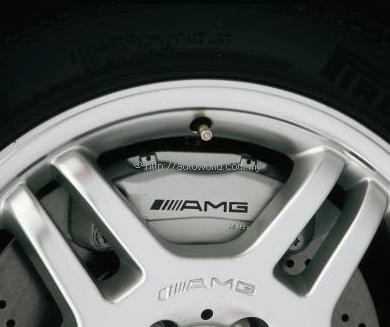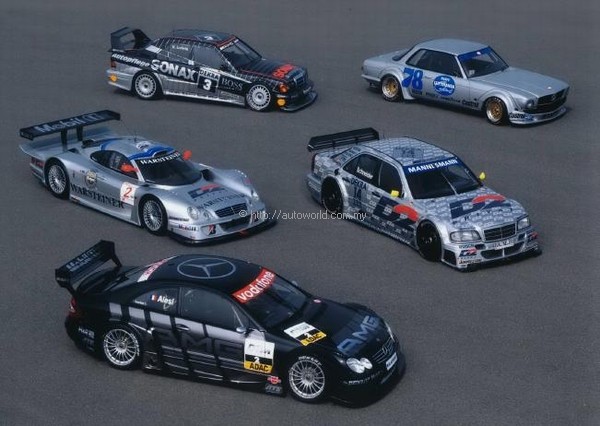Mercedes-AMG on the Fast Track to the Future
AMG
These three letters on a car tell the enthusiast that it’s no ordinary Mercedes-Benz. They signify that the car has received the attention of engineers at Mercedes-AMG GmbH – the high-performance division of the luxury carmaker.
This year marks the 35th year of AMG’s existence, the last three as part of the DaimlerChrysler group. The company had begun in 1967 as a specialist motorsport and tuning firm which was founded by Hans Werner Aufrecht and his partner Eberhard Melcher, the first letters of the surnames of the two men providing the ‘A’ and the ‘M’ whilst Aufrecht’s birthplace of Großaspach supplied the third letter in the company name.
When AMG was registered as a business, they officially described themselves as ”engineering, construction and testing specialists in the development of racing engines”. The firm was based in an old mill in Burgstall, near the town of Affalterbach in Germany.
Like a number of small German companies which specialised in extracting more power out of engines, AMG devoted a lot of time to developing racing saloons. Its first serious effort was with the Mercedes-Benz 300SE which was entered in European touring car events.
Within a few short years, in 1971, AMG had its first taste of fame and success when a Mercedes 300 SEL 6.8 modified by the company took a surprise class victory in the 24-hour race at Spa in Belgium, finishing in second place overall as well. This win was to be the first of many more in years to come as AMG stamped its superiority and demonstrated its talents in developing race-winning cars. By 1980, an AMG Mercedes 450 SLC took first place in the European Touring Car Championship grand-prix race at the Nürburgring.
When the compact 190 model arrived in the early 1980s, it was the perfect saloon for tuners and AMG wasted no time in turning it into another winner. Its cars were frequently seen taking the chequered flag in the hotly-contested German Touring Car Championship (DTM) which was viewed by 153 million people. The successes were noticed by Mercedes-Benz which decided to officially enter the championship with AMG in 1988.
The combined efforts saw AMG becoming the most successful team in the DTM, with Klaus Ludwig and Johnny Cecotto notching up seven race wins at the wheel of the AMG Mercedes 190 E 2.5-16 Evolution I. In 1991, the AMG Mercedes team finished top of the team standings and Mercedes-Benz takes the constructors’ title. The following year, AMG Mercedes again took the team honours and Mercedes-Benz kept the constructors’ crown. It was also the year which saw Ellen Lohr becoming the first woman to win a round of the DTM – at the wheel of an AMG Mercedes.
Saloon car racing was AMG’s forte but it also demonstrated its versatility when, in 1997, it developed a competitive CLK-GTR in only 128 days and Bernd Schneider used in the inaugural FIA GT Championship to win the title. For those who thought it was just ‘luck’, AMG Mercedes returned the following year and dominated the series. Klaus Ludwig and Ricardo Zonta won all eleven races and the drivers’ championship in an improved CLK-GTR while AMG Mercedes grabbed the constructors’ title.
The successes in motorsports were contributory to AMG’s increased popularity and it became widely recognised as one of the top tuners in Germany, particularly where Mercedes-Benz cars were concerned. Its success started to spread well beyond the international motorsport stage.
By the 1970s, as customers were beginning to develop a taste for more individuality in their cars, AMG exploited this burgeoning appetite as the platform to develop their business. The transfer of technology from motorsport into production cars already formed part of the company’s philosophy and, by developing impressive technology and first-class quality on the back of its involvement in motorsports, the company started to earn itself quite a reputation.
The strong demand for refined and tuned Mercedes-Benz vehicles in the late 1970s led to a steady increase in the number of orders received by AMG. The company outgrew its base in Burgstall and moved to Affalterbach in 1978.
AMG had been the first Mercedes-Benz tuning company and its success spawned competitors in the tuning industry. The company’s impact was evident at the 1981 Frankfurt International Motor Show where a total of 176 exhibitors were involved in tuning and accessories for the Mercedes-Benz brand alone. The increasing orders AMG received made expansion necessary: in 1985, ”Werk II”, the second factory, was opened and the 100th employee joined the company.
The company’s reputation was well known worldwide and customers came to Affalterbach from all over the planet. Its clientele included prominent figures from the worlds of motorsport, film, music, sport and economics, as well as royalty. Although some of the requests from these most discerning of customers were extremely specialised, AMG was always up to the task, tackling ‘one-off projects’ with their renowned passion and know-how.
As an industry pioneer and trendsetter, AMG used its constantly expanding well of experience to great benefit, ignoring short-lived fads. The company was already committed to achieving and retaining a position as a world leader in terms of technology, design and sales.
continued on page 2




























